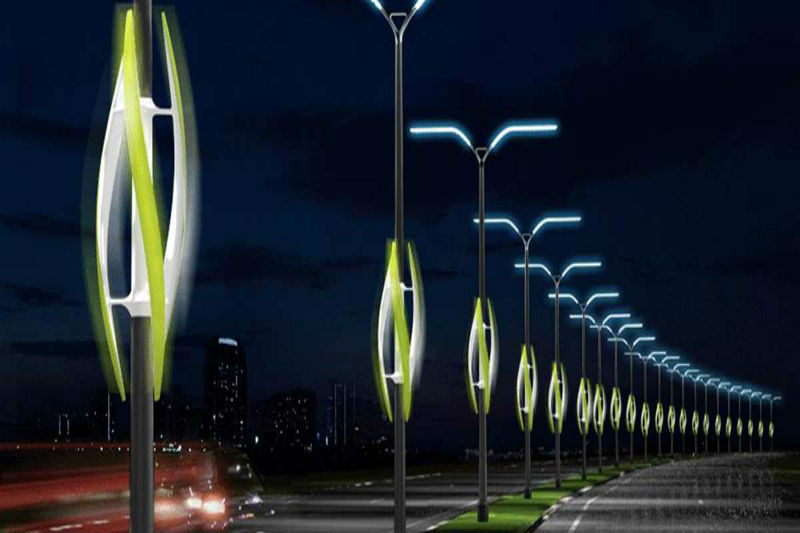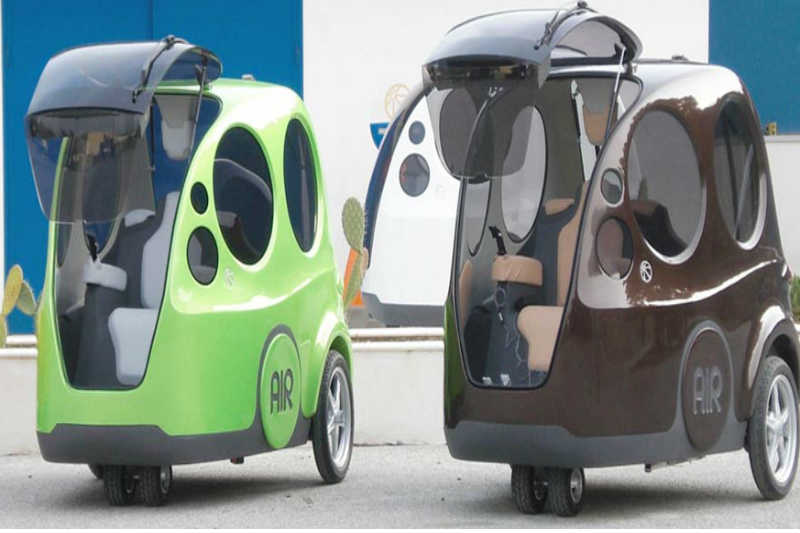When does a streetlight stop becoming something ordinary and turn into a self-sustaining work of art? Apparently, once it finds its way to Japan. Outside the Panasonic Center in Tokyo, one is greeted with several streetlights that incorporate both solar and wind energy systems. The design is called a ‘Seagull’ and takes advantage of light during the day to store energy for night; while producing electricity to push back into the grid thanks to the wind. The vertical turbine on this pole doesn’t appear to require too much wind to turn. No idea what the payback on this might be, but it’s certainly cool to see it in motion.
53 year-old Eddie House was proud of his efforts to reduce his waste. Being concerned for the environment, the single bachelor found that his sustainable habits left him with near-zero garbage. With nothing left to throw out that couldn’t be recycled or composted, he did what any individual might do to go the next mile: canceled his garbage service. As a reward for reducing his impact on the planet, House received a lawsuit from the San Carlos Deputy City Attorney claiming he was in violation of not maintaining garbage service. Wow. From the article,
The lawsuit claims House broke the city’s municipal code requiring all residential, commercial and industrial properties to contract with Allied Waste for pickup at least once a week — a standard requirement in most cities, San Carlos Deputy City Manager Brian Moura said. “It’s just me and my dog, so I don’t have a whole lot of garbage to begin with and I recycle everything,” he said.
Read More
National Geographic has a story about how the West in America is going to dry up in the future. Turns out the past 100 years is the especially wet period for this area, not the norm. That spells trouble for a lot of people, depending on how dry it might get.
Football player Tony Gonzalez has gone Vegan. That’s a big boy.
Treehugger has a survey up asking readers how they are planning to spend the rebate checks, if we get them. You should vote in it. The Green Options network also has a story about the stimulus package. I have yet to meet anyone who is going to spend it on much more than a small amount of things.
Our opinion on what you should do with it? Use it bulk up your food savings. Pick up some large packages of beans, rice, wheat and other supplies so you won’t be unprepared in the future. After that, look for cheap ways you can raise the efficiency of your house. Insulation, making rain barrels, starting a garden. Whatever you do, don’t go buying a plasma TV. If that’s one of your choices just save it, which you could do anyway.
While your busy making all those cool green upgrades in and around your house, don’t forget that your four-legged friends might also want a piece of the action. Well, at least that’s what one company called Sustainable Pet Design believes. They’ve introduced “Green Roof Animal Homes” that ‘smell good, grow plants, attract butterflies, filter water, insulate, and repeal fleas naturally.’
Each home is custom-built and uses only non-toxic materials, including untreated red cedar planks, zero-VOC paint, and beeswax waterproofing. All vegetation for the green roof is native to the region you live in.
Pretty cool idea — and something nice for those that would prefer not to take a hands-on approach. Otherwise, we’re pretty sure creating something similar wouldn’t be too difficult for the novice carpenter inside you. You might even be further encouraged to take that path when you see the starting prices for an extra-small green doghouse are just around $1,000. Want a really cool big one? $6K.
Makes me glad I have a porch for my pooch.
A company named Marquiss Wind Power has successfully finished raising $1.3 million for development of its Ducted Wind Turbines. Unlike their much larger counterparts, ducted turbines are boxy and stand about 19ft tall. Despite what appears to be aerodynamic disadvantages, this shape actually allows the turbine to re-orient itself according to the direction of air flow; something that can be a bit random in urban centers. The ducting is intended to increase wind speed as it approaches the blades. According to the website, these factors combine to allow the power output from the MWP turbine to exceed that of any traditionally designed comparable turbine. From the article,
At the moment, two models are sold — one intended for areas with wind speeds of 6-10 mph, and another for higher average speeds. The turbines are intended for buildings between one and three stories tall.
It sure ain’t elegant — but there’s a lot of science at play with this design. I especially like that AeropointT500 can operate in low wind speeds. I have no ideas on price — but hopefully that $1.3 million will go a long way to fleshing this product out a bit more.
A news story today discusses Monsanto and how they have obtained approval to release a genetically engineered sugar beet onto the market. You’ll be shocked to hear that the beet has been modified to live when Roundup is sprayed on it.
From the article:
“The law requires the government to take a hard look at the impact that deregulating Roundup Ready sugar beets will have on human health, agriculture and the environment,” said Greg Loarie, an attorney at the Earthjustice law firm, which is helping represent the plaintiffs. “The government cannot simply ignore the fact that deregulation will harm organic farmers and consumers, and exacerbate the growing epidemic of herbicide-resistant weeds.”
Viva la France! French engineer Guy Nègre has been working on the concept of an air-powered car for the past 15 years. Thanks to a new contract with India’s main car manufacturer, Tata Motors, Nègre’s technology is about to reap the benefits of a major corporate backer; not to mention access to a massive, growing market. Geeks Are Sexy lays out the details on the tech,
“The principle that makes this car work is very simple. Instead of using gas to create an explosion and make the pistons move, the vehicle’s engine is powered via three compressed air tanks located under its chassis. Environmentally speaking, this means all that goes out the exhaust pipe is cold, pure air, which can even be used as an air-conditioning source on a hot summer day.”
It doesn’t come in green, but Philips’ new 42-inch Eco TV is certainly sporting some earth-friendly credentials.
Announced at CES 2008, this television is packed with power-saving features; something a few of my off-grid friends might find interesting when considering their next (or first) television. From the article,
“Chief among them is the ability to dim the backlight–by up to five times peak brightness–in response to program material, much like the “local dimming” found on Samsung’s LED-based LN-T4681F. Dimming the backlight in darker scenes has the dual benefit of saving power and improving black-level performance, according to the company. The backlight can also be dimmed via a room lighting sensor, so in dark rooms it will use less power. There’s also traditional a “power-saving” mode that caps the peak light output.”
I always enjoy creative fixes to environmental eyesores. Take for instance this concept for a slip-on cover made from wool felt for water bottles. Called the Cup Lasso, it effectively turns what might otherwise simply be recycled into a suddenly useful and appealing vase for flowers. Nice, right? The concept comes from Orcadesign’s “GreenHouse Effect” project — which explores 10 concepts for eco-friendly living with aesthetic appeal.
While we’ve seen solar cell efficiency squeak past 40% in labs this year, we’re still stuck commercially with panels that at most convert about 20% of what hits them into energy. Then there’s the whole “darkness” thing that cuts into production for part of the day.
Researchers at the Idaho National Laboratory have potentially solved both issues by turning to another hot field: nanotechnology. From the article,
With this new technology, millions of extremely small twists of metal are molded into banks of “microantennas”, which can be placed on almost any material, including plastic sheets. These spiral shaped “microantennas” are about 1/25 the width of a human hair. They are so small that they resonate from the interaction with the sun’s infrared rays. This resonation can be translated into energy. During the day, the Earth soaks up a lot of this infrared energy, which is then radiated out at night — enabling these microantennas to collect power even after the sun has set.

















